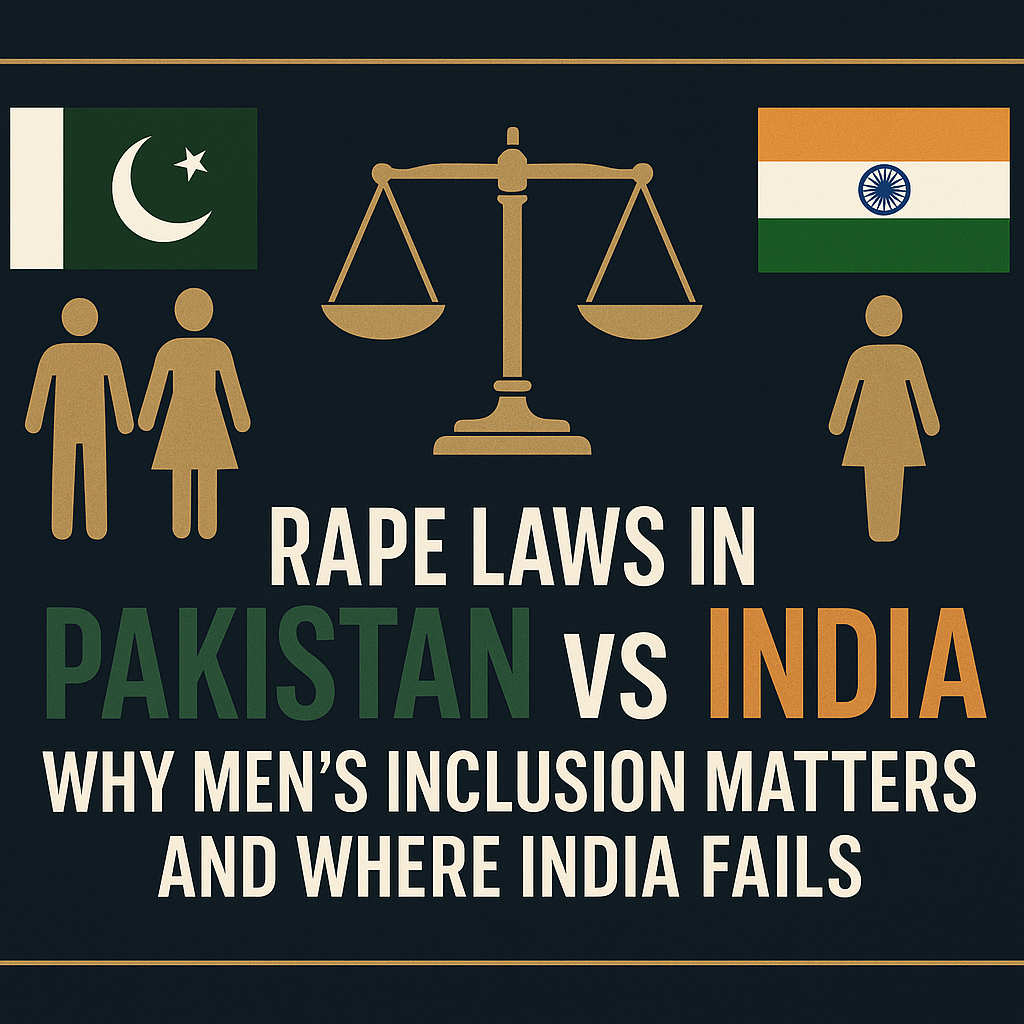Introduction
The crime done by any human being didn’t differentiate by any gender just like that sexual violence knows no gender. Yet, laws of different origin treat victims distinctly. On the one hand Pakistan has taken a progressive step by making its Rape laws gender neutral, providing protection to both men and women. India on the other hand still defines rape solely in terms of a female victim and a male perpetrator under Section 375 of the Indian Penal Code (IPC) Which is now Section 63 in Bharatiya Nyaya Sanhita (BNS). Many critics believe that “India Fails”.
Pakistan’s Rape Laws
· In past two decades Pakistan’s rape laws have gone under major changes. The most significant change is in the Criminal Law with the amendment of 2016. Which broadened the definition of rape to cover victims and offenders of any gender.
· After the 2016 amendment section 375 of the Pakistan Penal Code defines rape as any sexual act carried out without consent no matter the victim’s gender. This highlights the equal protection to both men and women.
· By this step the legal recognising of male victim of sexual violence has started. Pakistan highlighted this issue and stated that these are the issues which are overlooked by South Asia due to cultural stigma and the silence of the male victim due to societal fear.
India’s Rape Laws
· In India Rape is defined under section 63 of the Bharatiya Nyaya Sanhita (BNS) in which it is defined as a man having sexual relationship with a woman without her consent. This wording automatically leaves male survivors outside the scope of the law.
· After the 2013 amendment the definition of certain sexual offences has broadened but the offence of Rape is still legally recognised as done against a woman. As a result, men and transgender people lack legal protection under this section.
· Even after the long pushed by the activist for the gender-neutral rape laws. The government has resisted, stating that the expanding of the definition would lead to potential misuse.
Pakistan v/s India: A legal Comparison
· Pakistan recognises rape against any gender and India legal protection against the Rape is limited to women.
· In Pakistan, male victims often remain silent due to deep rooted cultural stigma, but at least the law acknowledges their right to justice. In India many will be silent due to the law itself does not recognise them as a victim.
· Both the countries go through problems like flawed investigations, victim blaming, societal fear, cultural insecurities etc. However, we have to say that the Pakistan’s gender-neutral framework provides a strong legal foundation to address the Rape cases against the males.
Shortcomings in India’s Approach
· The patriarchal Mindset in policy gives a hard time to the male victim as the Indian lawmakers often consider the Rape as a women’s issue that ignores the male victims completely.
· This hampers the justice with male victims as if law itself didn’t recognise them, male survivor can’t press rape charges, which fuels under reporting and deepens their emotional harm.
Conclusion
Pakistan’s shift to gender inclusive rape laws sends a clear message to the world that justice should protect everyone. But Indian laws by excluding male and transgender victims continue to create unequal protection. India as the largest populated country and one of the fastest growing economies in terms of development needs a gender inclusive framework that guarantees justice for all no matter the gender of the individual.
About the Author
Tushar Kumar is a final-year BBA-LLB student at Guru Gobind Singh Indraprastha University. With a strong interest in Intellectual Property Rights, he enjoys exploring how law interacts with innovation and creativity. He’s equally passionate about legal writing, Research and believes in making complex legal ideas easier to understand through clear articles. Tushar continues to deepen his understanding of the law while contributing thoughtful pieces on contemporary legal issues.

